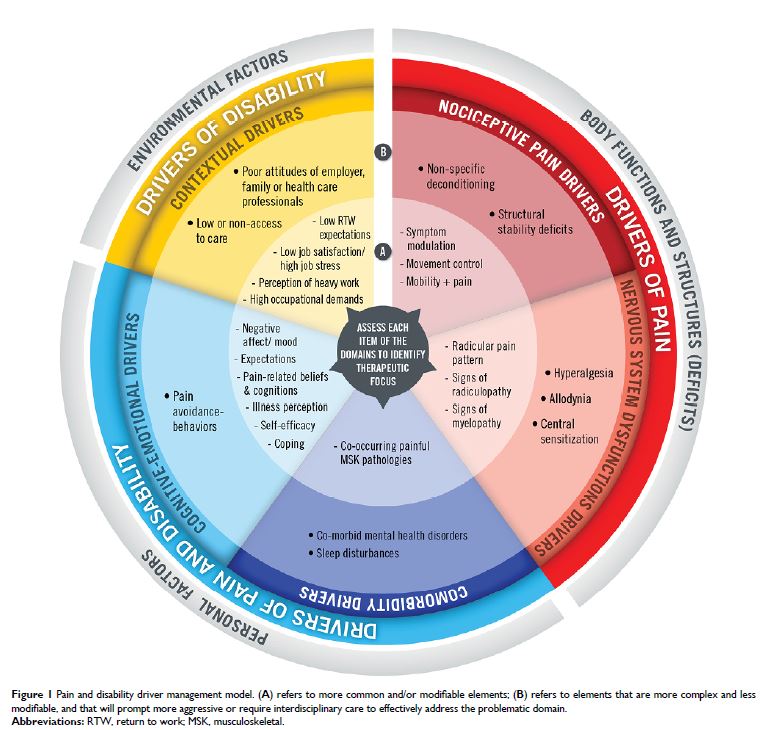9 7 8 1 6
论文已发表
注册即可获取德孚的最新动态
IF 收录期刊
- 3.3 Breast Cancer (Dove Med Press)
- 3.4 Clin Epidemiol
- 2.5 Cancer Manag Res
- 2.9 Infect Drug Resist
- 3.5 Clin Interv Aging
- 4.7 Drug Des Dev Ther
- 2.7 Int J Chronic Obstr
- 6.6 Int J Nanomed
- 2.5 Int J Women's Health
- 2.5 Neuropsych Dis Treat
- 2.7 OncoTargets Ther
- 2.0 Patient Prefer Adher
- 2.3 Ther Clin Risk Manag
- 2.5 J Pain Res
- 2.8 Diabet Metab Synd Ob
- 2.8 Psychol Res Behav Ma
- 3.0 Nat Sci Sleep
- 1.8 Pharmgenomics Pers Med
- 2.7 Risk Manag Healthc Policy
- 4.2 J Inflamm Res
- 2.1 Int J Gen Med
- 4.2 J Hepatocell Carcinoma
- 3.7 J Asthma Allergy
- 1.9 Clin Cosmet Investig Dermatol
- 2.7 J Multidiscip Healthc

Rehabilitation management of low back pain – it’s time to pull it all together!
Authors Tousignant-Laflamme Y, Martel MO, Joshi AB, Cook CE
Received 15 July 2017
Accepted for publication 16 August 2017
Published 3 October 2017 Volume 2017:10 Pages 2373—2385
DOI https://doi.org/10.2147/JPR.S146485
Checked for plagiarism Yes
Review by Single-blind
Peer reviewers approved by Dr Minal Joshi
Peer reviewer comments 3
Editor who approved publication: Dr Michael Schatman
Abstract: In
the past, rehabilitation research initiatives for low back pain (LBP) have
targeted outcome enhancement through personalized treatment approaches, namely
through classification systems (CS). Although the use of CS has enhanced
outcomes, common management practices have not changed, the prevalence of LBP
is still high, and only selected patients meet the CS profile, namely those
with a nociceptive context. Similarly, although practice guidelines propose
some level of organization and occasionally a timeline of care provision, each
mainly provides best practice for isolated treatment approaches. Moreover,
there is no theoretical framework that has been proposed that guides the
rehabilitation management process of mechanical LBP. In this commentary, we
propose a model constituted of five domains (nociceptive drivers, nervous
system dysfunction drivers, comorbidities drivers, cognitive–emotional drivers,
and contextual drivers) grounded as mechanisms driving pain and/or disability
in LBP. Each domain is linked to the International Classification of
Functioning, Disability and Health, where once a patient is deemed suitable for
rehabilitation, the clinician assesses elements of each domain in order to
identify where the relative treatment efforts should be focused. This
theoretical model is designed to provide a more comprehensive management
overview, by appreciating the relative contribution of each domain driving pain
and disability. Considering that the multiple domains driving pain and
disability, and their interaction, requires a model that is comprehensive
enough to identify and address each related issue, we consider that the
proposed model has several positive implications for rehabilitation of this
painful and highly prevalent musculoskeletal disorder.
Keywords: low back pain, spine, rehabilitation, pain management
